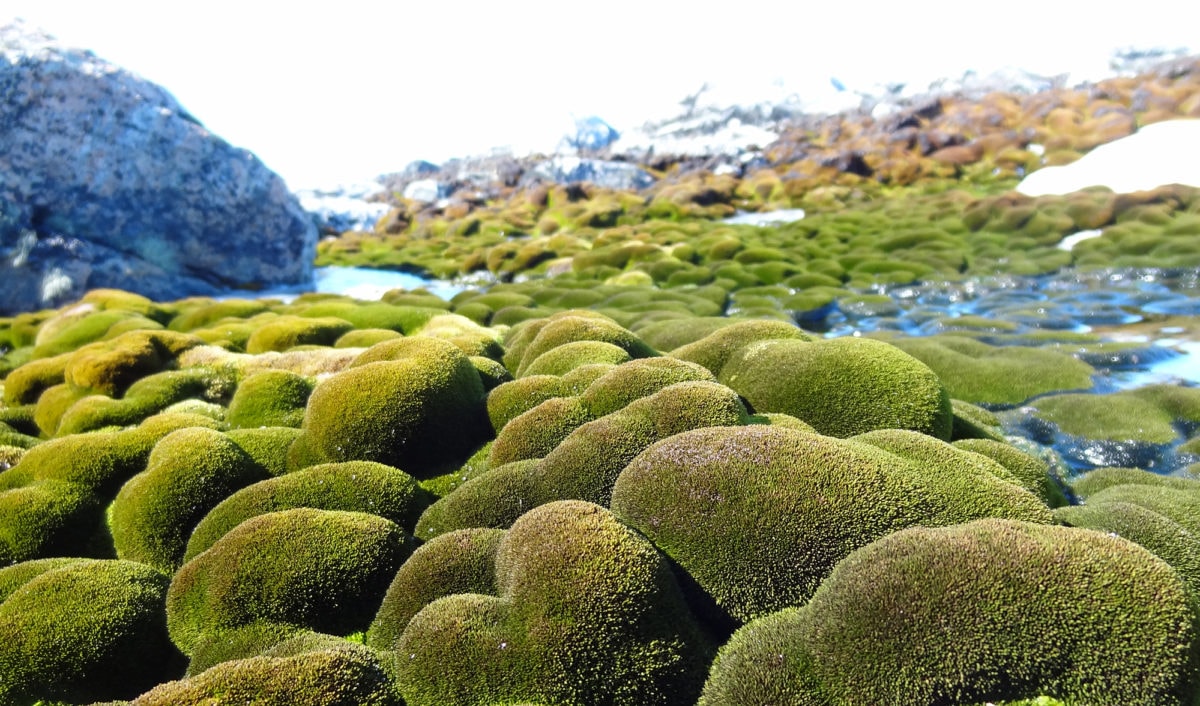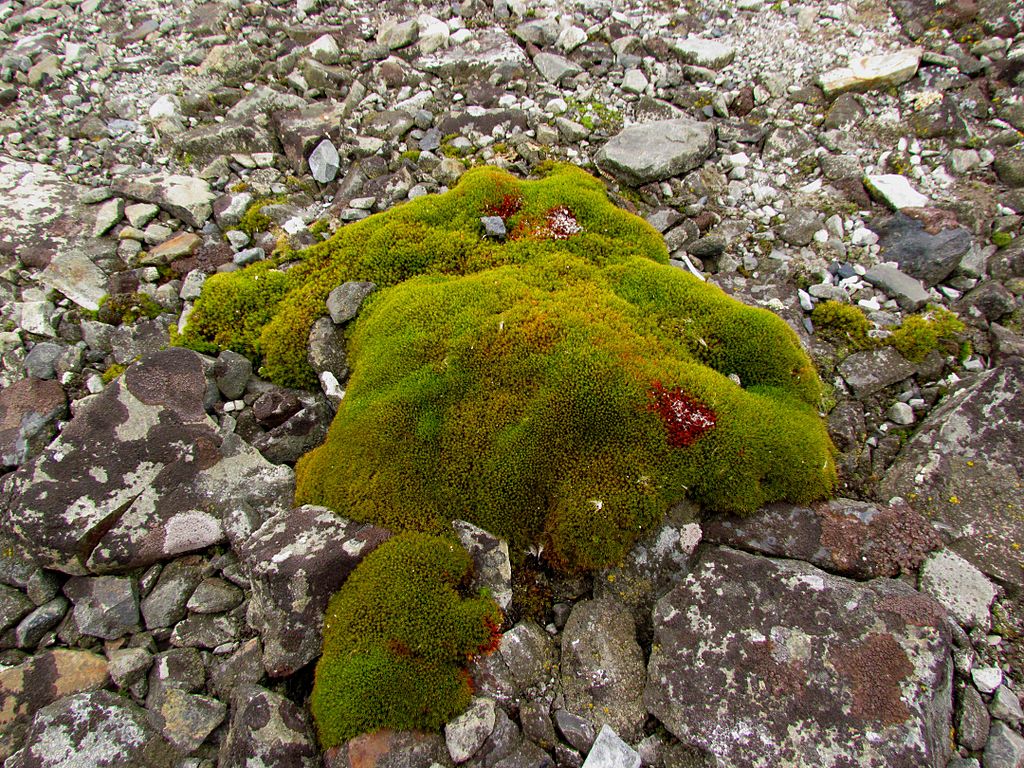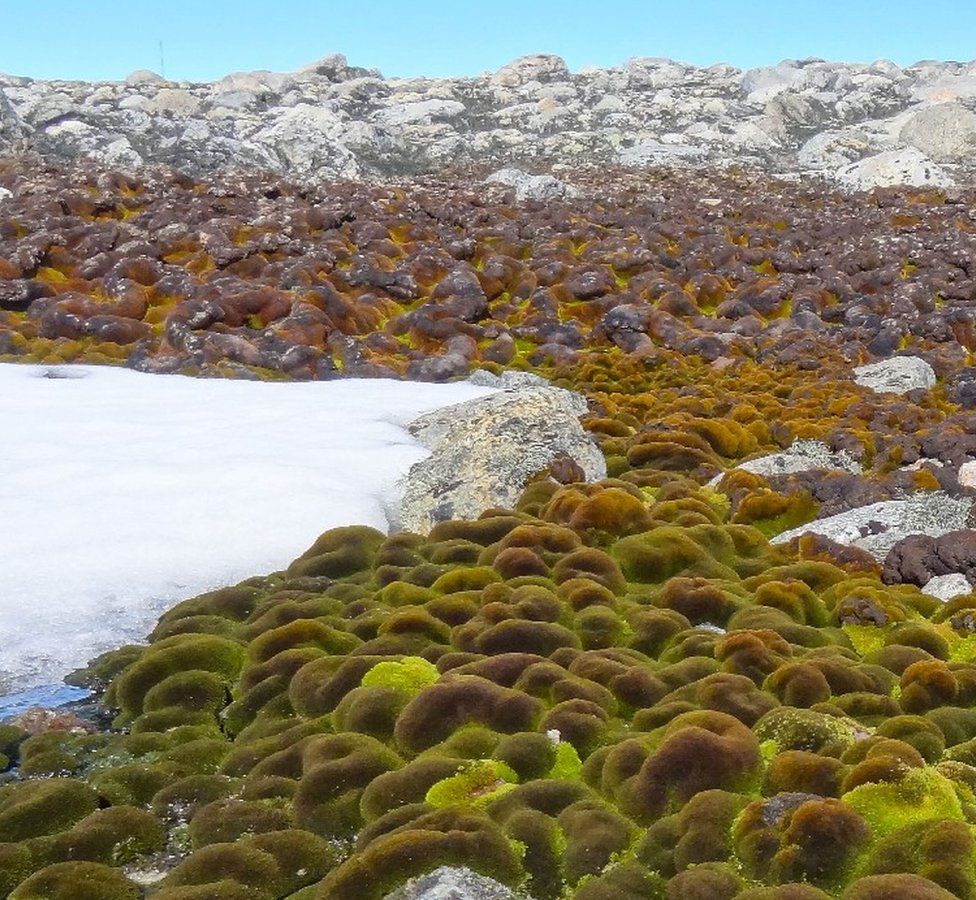
image from: https://www.australiangeographic.com.au/topics/science-environment/2018/09/the-moss-forests-of-antarctica-are-dying/
Introduction
In the vast and fascinating world of bryophytes, one tiny moss stands out for its remarkable resilience and ability to thrive in the harshest of environments.

image from: http://theconversation.com/antarcticas-moss-forests-are-drying-and-dying-103751

image from: https://www.researchgate.net/figure/A-D-Isopterygium-byssobolax-Muell-Hal-Paris-A-Habito-de-crescimento-B-Filidio-C_fig1_320224561
Dicranoweisia antarctica (Müll.Hal.) Paris, a member of the Rhabdoweisiaceae family, is a true survivor, making its home in the frozen landscapes of Antarctica. This unassuming moss has captured the attention of enthusiasts and scientists alike, inspiring awe and curiosity about its unique adaptations and ecological significance.
Background
Before delving into the intricacies of

image from: https://www.researchgate.net/figure/Figura-6-Dicranella-gymna-Muell-Hal-Broth-A-Habito-B-Filidios-C-Apice-do_fig6_343400267
Dicranoweisia antarctica, it’s essential to understand the broader context of bryophytes. These non-vascular plants, which include mosses, liverworts, and hornworts, are often overlooked but play a crucial role in various ecosystems. They are among the oldest land plants on Earth, dating back to the Paleozoic era, and have evolved remarkable strategies to survive in diverse environments.

image from: https://www.semanticscholar.org/paper/The-complete-mitochondrial-genome-of-an-Antarctic-Min-Sulaiman/616d37885f8b40112ec6294d267507de7de452ee/figure/0
Main Content
Morphology and Identification
Dicranoweisia antarctica is a small, acrocarpous moss, typically growing in dense cushions or tufts. Its leaves are narrow, lanceolate, and often curved or twisted when dry, forming a distinctive spiral pattern. The leaf margins are entire, and the costa (midrib) is prominent, extending to the leaf apex or slightly beyond. The sporophytes, when present, bear erect, cylindrical capsules on short setae (stalks).
Global Distribution and Habitat
As its name suggests, Dicranoweisia antarctica is primarily found in the Antarctic region, including the Antarctic Peninsula, the Ross Sea area, and various sub-Antarctic islands. It thrives in the harshest of conditions, growing on exposed rock surfaces, soil, and even penguin guano (excrement). This moss is a true pioneer species, often among the first to colonize newly exposed areas after glacial retreat or volcanic activity.
Ecological Roles and Adaptations
Despite its diminutive size, Dicranoweisia antarctica plays a vital role in the Antarctic ecosystem. It contributes to soil formation and nutrient cycling, providing a foothold for other organisms to establish themselves. Additionally, this moss serves as a food source and habitat for various invertebrates, further supporting the intricate web of life in these extreme environments.

image from: https://www.westarctica.wiki/index.php?title=File:Antarctic_Moss.jpg
One of the most remarkable aspects of Dicranoweisia antarctica is its ability to withstand extreme cold, desiccation, and high levels of ultraviolet radiation. This resilience is attributed to various physiological and biochemical adaptations, including the production of protective pigments, the ability to enter dormancy, and the presence of specialized proteins that prevent cellular damage.
Case Studies/Examples
In a study conducted by researchers at the British Antarctic Survey, Dicranoweisia antarctica was found to be one of the most abundant and widespread mosses in the Antarctic Peninsula region. Its ability to colonize newly exposed areas after glacial retreat highlights its importance as a pioneer species, paving the way for the establishment of more complex plant communities.
Another fascinating example comes from the Dry Valleys of Antarctica, where Dicranoweisia antarctica has been observed growing on the surface of glaciers. These moss communities, known as “glacier mice,” are able to survive and even thrive in this extreme environment, demonstrating the remarkable adaptations of this species.
Technical Table

image from: https://www.researchgate.net/figure/Figura-7-Dicranella-harrisii-Muell-Hal-Broth-A-Habito-B-Filidios-C-Apice-do_fig7_343400267

image from: https://www.bbc.co.uk/news/science-environment-45629395

image from: https://www.researchgate.net/figure/Figura-12-Orthostichopsis-tortipilis-Muell-Hal-Broth-a-Habito-b-Filidios-c_fig12_309232610
| Characteristic | Description |
|---|---|
| Phylum | Bryophyta |
| Class | Bryopsida
 image from: https://www.researchgate.net/figure/Antarctic-vascular-plants-exploiting-areas-previously-colonised-by-mosses-on-Signy-Island_fig1_336609079 |
| Order | Dicranales |
| Family | Rhabdoweisiaceae |
| Genus | Dicranoweisia |
| Species | Dicranoweisia antarctica (Müll.Hal.) Paris |
| Growth Form | Acrocarpous, cushion or tuft |
| Leaf Shape | Lanceolate, often curved or twisted when dry |
| Leaf Margin | Entire |
| Costa | Prominent, extending to leaf apex or slightly beyond |
| Sporophyte | Erect, cylindrical capsules on short setae |
| Habitat | Exposed rock surfaces, soil, penguin guano |
| Distribution | Antarctic region, sub-Antarctic islands |